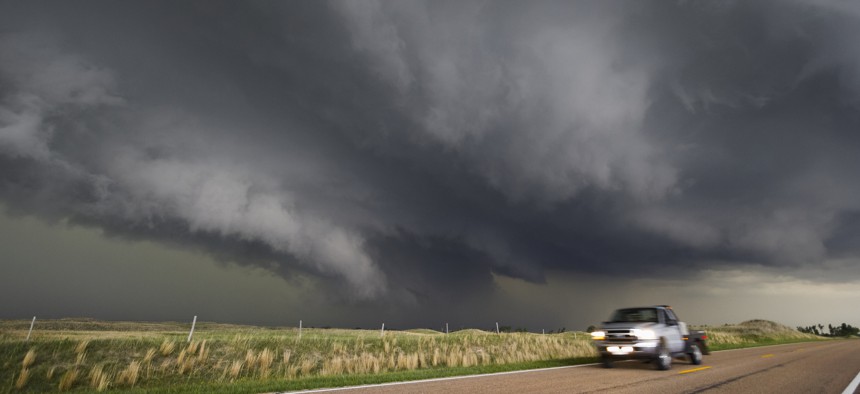New Statewide System Boosts State's Mass Emergency Alerts

GettyImages/Mike Hollingshead
Emergency managers in Iowa now can automatically push out safety alerts through emails, text messages, phone calls, RSS feeds and social media—and in multiple languages.
A new statewide alert system in Iowa has increased the reach of emergency notifications.
Alert Iowa, which now uses Rave Mobile Safety’s Rave Alert cloud-based mass notification system, can automatically push out information through emails, text messages, phone calls, RSS feeds and social media—and in multiple languages.
Before, when a tornado warning was issued, emergency managers would “have to go to their Facebook page and go to their Twitter page and type that information in, and now this is automatic,” said Allison Bright, program planner at Iowa’s Department of Homeland Security and Emergency Management, which manages the system. Now, as soon as a warning is “issued by the National Weather Service, it automatically gets issued to their social media pages.”
It also works seamlessly with the Smart911 app, which residents can subscribe to with their physical address to receive geo-targeted alerts. “What the emergency manager [in a county or at the state level] can do is geofence a location and say, ‘This issue is going on inside this geofenced location area,’” Bright said, adding that the state has reached more than 2,700 users that way since the new system went live July 1, 2021.
The system is really a service to the counties, added John Benson, department director. “Philosophically, our state is a home rule state, so we tend to leave a lot of the responsibility at the local end, but we also recognized that as the state, if we did jump on the lead, it would be a benefit,” he said. To that end, “our system is entirely voluntary, but it’s also available to those local entities at no cost…. If they have a preferred system that they would like to continue to use, they are completely able to do that. If they want to use our system to supplement their effort or if they want to use our system as their sole effort, all of those situations are fine by us. We’re just giving them another tool to put in their toolbox.”
So far 87 of the state’s 99 counties are onboard with it, and since it went live, the system has sent almost 4,800 alerts, with 432 posts to Twitter and 689 to Facebook, sent almost 425,000 emails and 850,000 texts and made 350,000 phone calls.
Each county can set the system up differently, based on their residents’ preferences. For instance, some lump together tornado watches and warnings, while others separate them out. Other counties have more language options than others, depending on their population.
To use it, residents can sign up with a text opt-in code to get minimal alerting for their county, or they can sign up for more robust reporting through Alert.Iowa.gov or the Smart911 app, which uses the same account. Through that account, users can voluntarily share additional information such as their age and medical information, but all they are required to share to access the system is name, address and phone number.
Through that single account, users can also add household members and addresses of family members in other counties to get alerts about events there, too.
To keep the data safe, Bright said the state doesn’t use it for any other purpose, and users can change what they share at any time. Additionally, Rave Alert is authorized by the Federal Risk and Authorization Management Program.
Bright put together a five-month timeline to prepare counties for the switch to the new system. During that time, she and Rave representatives met with county stakeholders in person and online to provide training.
“You can potentially import over data from resident signups, but one of the problems with that is, is [whether the data is] still good if we’re getting it from an older vendor,” Bright said. “We, as part of our system, own our data, so when we were switching vendors, we were able to pull all of the old data and give counties the option: ‘Do you want us to port over your current contacts that you have for your county account, or do you want to start from scratch?’ We had a good mixture of people who said, ‘No, I don’t trust that old data. I want to start from scratch’ or ‘Yes, I want to port it over as a failsafe.’”
Now that the system is up and running, Bright is still involved in ensuring its success. She started a committee with representatives from state districts that meets regularly to talk about problems and needs. “It’s a continuous process,” she said. “You can’t just put it in place and forget about it and hope that it works. You have to work at it and keep it at the forefront and make sure that people know that this is a really good tool.”
Stephanie Kanowitz is a freelance writer based in northern Virginia.
NEXT STORY: There’s a Push to Get More Electric School Buses on the Streets—Moms Are Driving It





